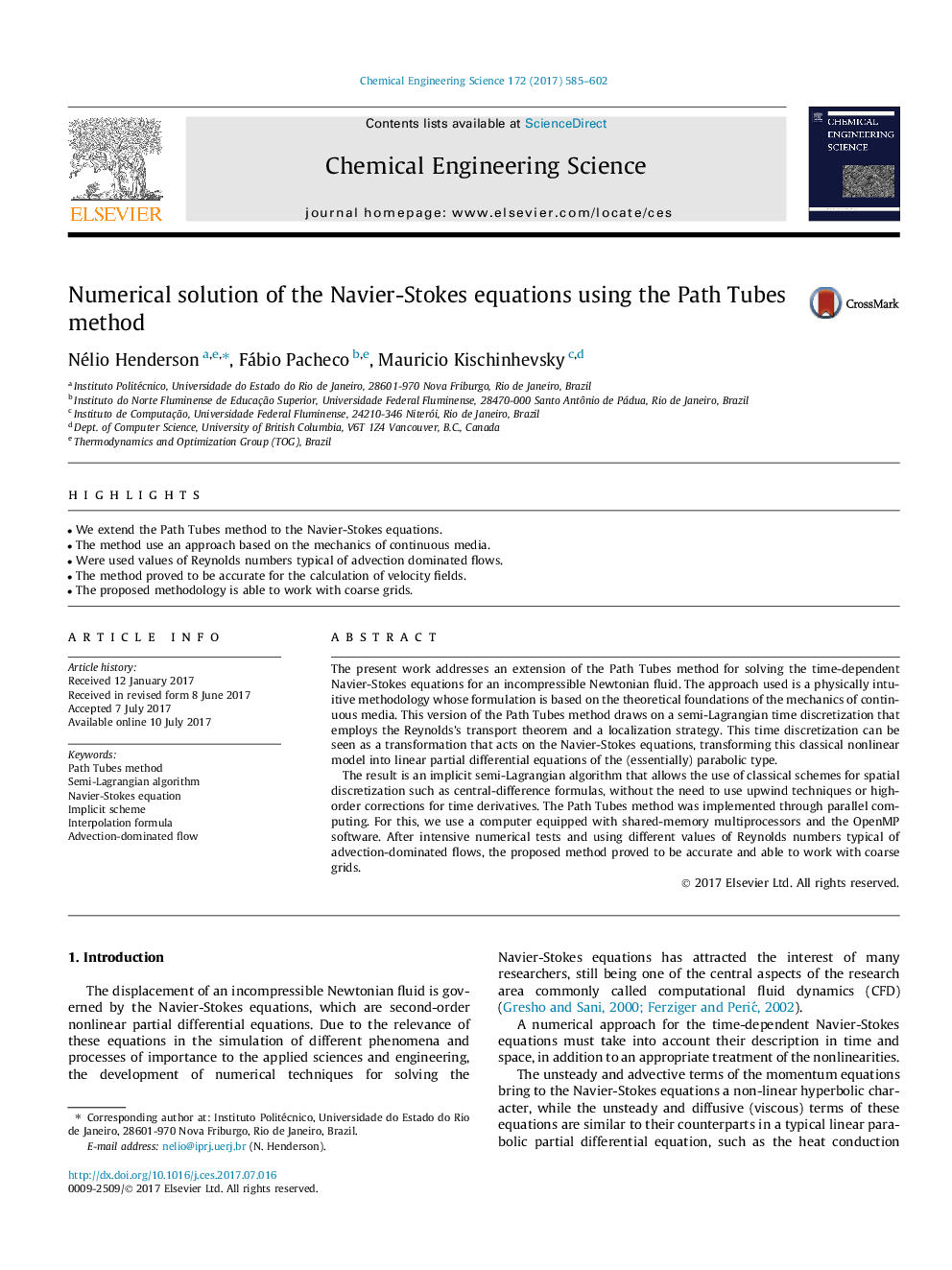| Article ID | Journal | Published Year | Pages | File Type |
|---|---|---|---|---|
| 6467047 | Chemical Engineering Science | 2017 | 18 Pages |
â¢We extend the Path Tubes method to the Navier-Stokes equations.â¢The method use an approach based on the mechanics of continuous media.â¢Were used values of Reynolds numbers typical of advection dominated flows.â¢The method proved to be accurate for the calculation of velocity fields.â¢The proposed methodology is able to work with coarse grids.
The present work addresses an extension of the Path Tubes method for solving the time-dependent Navier-Stokes equations for an incompressible Newtonian fluid. The approach used is a physically intuitive methodology whose formulation is based on the theoretical foundations of the mechanics of continuous media. This version of the Path Tubes method draws on a semi-Lagrangian time discretization that employs the Reynolds's transport theorem and a localization strategy. This time discretization can be seen as a transformation that acts on the Navier-Stokes equations, transforming this classical nonlinear model into linear partial differential equations of the (essentially) parabolic type.The result is an implicit semi-Lagrangian algorithm that allows the use of classical schemes for spatial discretization such as central-difference formulas, without the need to use upwind techniques or high-order corrections for time derivatives. The Path Tubes method was implemented through parallel computing. For this, we use a computer equipped with shared-memory multiprocessors and the OpenMP software. After intensive numerical tests and using different values of Reynolds numbers typical of advection-dominated flows, the proposed method proved to be accurate and able to work with coarse grids.
